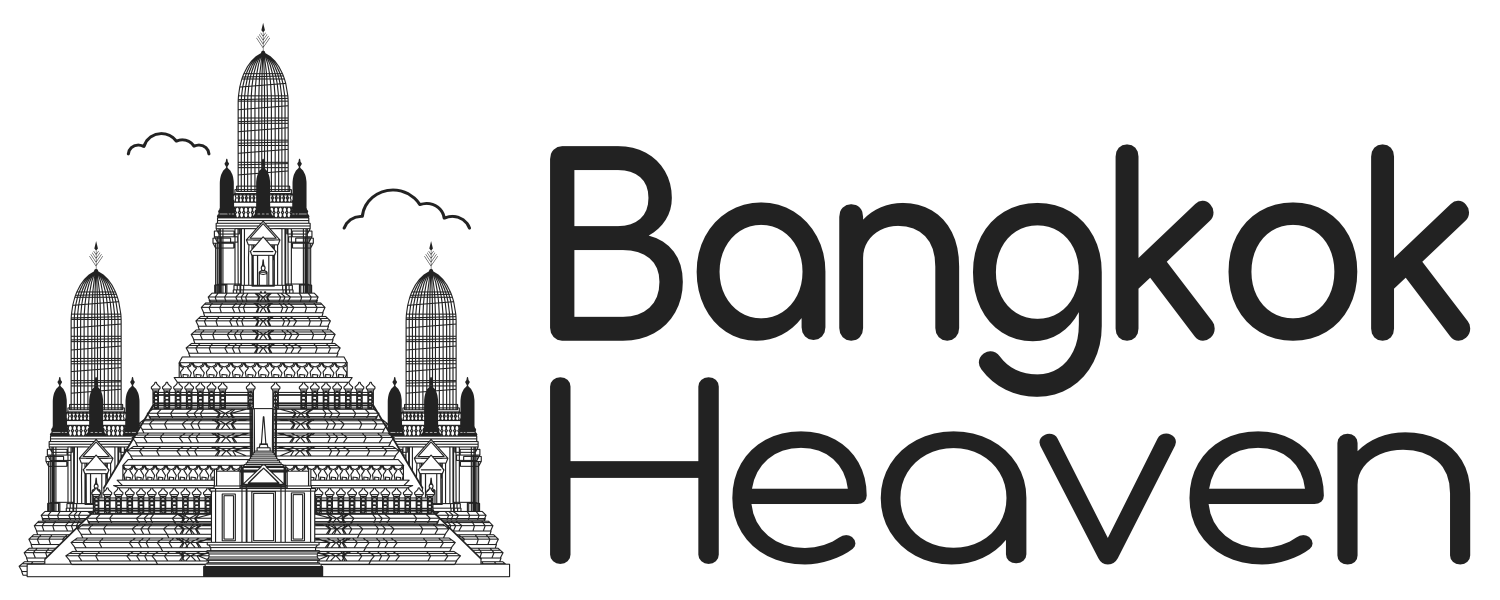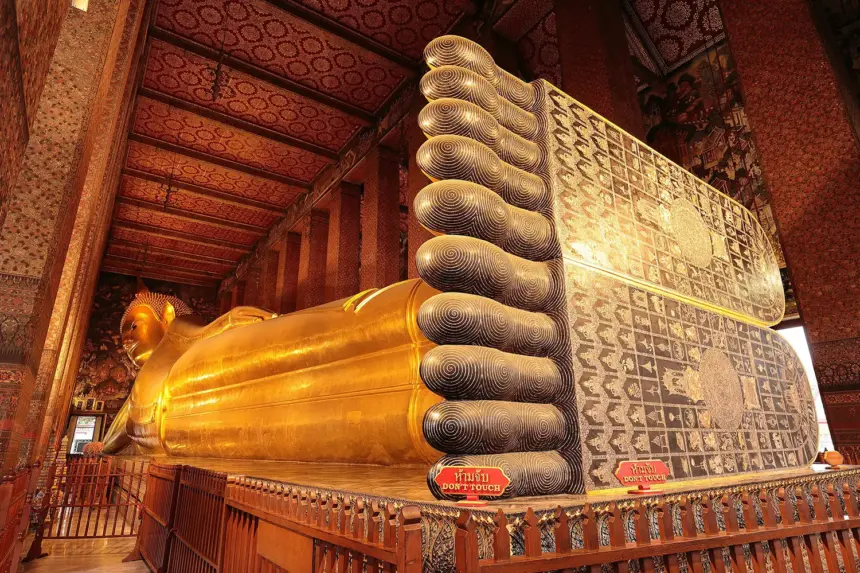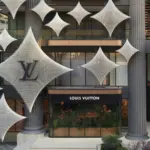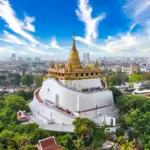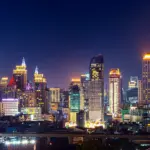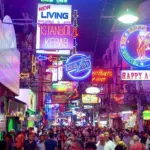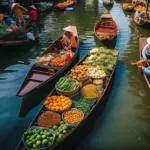Exploring Wat Pho: The Birthplace of Thai Massage and the Temple of the Reclining Buddha
Wat Pho, also known as Wat Phra Chettuphon Wimon Mangkhlaram Ratchaworamahawihan, is one of Bangkok’s most famous and culturally significant temples. Nestled within the heart of Thailand’s bustling capital, this historic site is a treasure trove of Thai art, culture, and spirituality. It is particularly renowned for housing the gigantic Reclining Buddha and being the birthplace of traditional Thai massage. This article delves into the rich history, architecture, cultural significance, and visitor experience of Wat Pho, offering a comprehensive guide to this iconic temple.
A Brief History of Wat Pho
Wat Pho’s history dates back to the 16th century, during the Ayutthaya period, long before Bangkok became the capital of Thailand. Originally known as Wat Photaram, the temple was a center for religious education and a place for meditation. However, it was extensively renovated and expanded by King Rama I when Bangkok was established as the capital in 1782. The king aimed to make Wat Pho a leading center for learning and religious practice, laying the foundation for its reputation as a place of education and healing.
King Rama III further enhanced the temple during the 19th century, adding more pavilions, stupas, and a library to house ancient texts. It was during this period that Wat Pho became the first public university in Thailand, specializing in subjects like religion, science, and traditional Thai medicine.
The Architectural Marvel of Wat Pho
Wat Pho spans over 80,000 square meters, making it one of the largest temple complexes in Bangkok. Its architecture is a blend of traditional Thai designs with influences from the Ayutthaya, Rattanakosin, and early Bangkok periods. The temple complex is divided into two main sections: the northern section, which houses the Reclining Buddha, and the southern section, which is home to the monastic facilities.
The Reclining Buddha
The most iconic feature of Wat Pho is undoubtedly the Reclining Buddha, known as Phra Buddhasaiyas. This massive statue measures 46 meters in length and 15 meters in height, making it one of the largest Buddha statues in Thailand. The Reclining Buddha represents the Buddha’s entry into Nirvana and the end of all reincarnations. The statue is made of brick and covered in gold leaf, giving it a radiant appearance that captivates visitors.
One of the most striking aspects of the Reclining Buddha is its feet, which are 5 meters long and inlaid with intricate mother-of-pearl designs. These designs depict the 108 auspicious symbols of Buddhism, such as flowers, elephants, and tigers, each representing a different aspect of the Buddha’s teachings.
The Ubosot (Ordination Hall)
The Ubosot, or ordination hall, is the most sacred building in Wat Pho. It is where new monks are ordained and important religious ceremonies are conducted. The Ubosot is a masterpiece of traditional Thai architecture, with its multi-tiered roof, gilded gables, and intricate carvings. Inside, the hall houses a beautiful golden Buddha image known as Phra Buddha Deva Patimakorn, which is seated on a high pedestal under a nine-tiered umbrella, symbolizing the spiritual authority of the Buddha.
The walls of the Ubosot are adorned with murals depicting scenes from the life of the Buddha, as well as the Traiphum, or the three worlds of Buddhist cosmology: heaven, earth, and hell. These murals are not only artistically significant but also serve as educational tools, conveying the moral teachings of Buddhism to the faithful.
The Chedis
Wat Pho is home to 91 chedis, or stupas, which are scattered throughout the temple complex. The most prominent of these are the four large chedis, known as Phra Maha Chedi, which are dedicated to the first four kings of the Chakri dynasty. These chedis are decorated with colorful mosaics and porcelain tiles, creating a dazzling visual effect that reflects the sunlight.
Each of the Phra Maha Chedi is distinct in its color and design, representing different aspects of Buddhism. The green chedi is dedicated to King Rama I, the white chedi to King Rama II, the yellow chedi to King Rama III, and the blue chedi to King Rama IV. These chedis not only serve as monuments to the kings but also as symbols of the enduring legacy of Buddhism in Thailand.
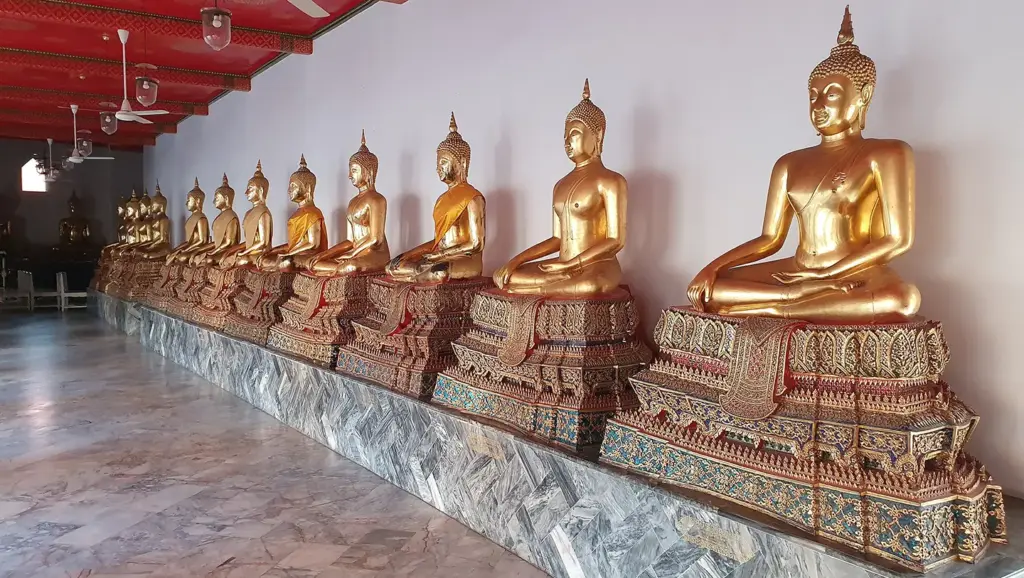
Wat Pho as the Birthplace of Thai Massage
Wat Pho is not just a place of worship; it is also the birthplace of traditional Thai massage, which has become famous worldwide. The temple’s history as a center for Thai medicine dates back to the reign of King Rama III, who established a school of traditional medicine within the temple complex. This school was the first institution in Thailand to offer formal training in Thai massage and medicine, preserving and passing down ancient healing practices.
Today, Wat Pho continues to be a leading center for Thai massage, with a renowned massage school that attracts students from around the world. The school offers courses in traditional Thai massage, herbal medicine, and other therapeutic practices. Visitors to Wat Pho can experience a traditional Thai massage at the temple, where skilled therapists use techniques that have been handed down through generations.
The massage pavilions at Wat Pho are adorned with stone inscriptions and illustrations that depict various massage techniques and pressure points. These inscriptions were commissioned by King Rama III to ensure that the knowledge of Thai massage would be preserved for future generations. As a result, Wat Pho is recognized by UNESCO as a Memory of the World for its contribution to the preservation of traditional Thai medicine.
The Cultural Significance of Wat Pho
Wat Pho is not just a tourist attraction; it is a living cultural and religious center that plays a vital role in the spiritual life of Bangkok’s residents. The temple is a place where people come to pay their respects to the Buddha, seek blessings, and meditate. It is also a venue for important religious festivals, such as Songkran (Thai New Year) and Visakha Bucha (Buddha’s Birthday), which draw large crowds of worshippers.
In addition to its religious functions, Wat Pho is a symbol of Thai cultural identity. The temple’s architecture, art, and educational activities reflect the values and traditions of Thai society. For example, the emphasis on education and healing at Wat Pho is in line with the Thai belief in the importance of both physical and spiritual well-being.
Wat Pho also serves as a bridge between Thailand’s past and present. The temple’s preservation of ancient art, architecture, and medical knowledge ensures that the country’s cultural heritage is passed down to future generations. At the same time, Wat Pho remains relevant in the modern world, attracting visitors from all over the globe who come to learn about Thai culture and experience the serenity of Buddhist practice.
Visiting Wat Pho
For those planning to visit Wat Pho, it is essential to know a few practical details to make the most of the experience. The temple is located near the Grand Palace and the Temple of the Emerald Buddha, making it easy to visit all three sites in one day. Wat Pho is open daily from 8:00 AM to 6:30 PM, and there is a modest entrance fee for foreign visitors, which helps fund the temple’s maintenance and activities.
When visiting Wat Pho, it is important to dress respectfully, as it is a sacred site. Visitors should wear clothing that covers the shoulders and knees, and shoes should be removed before entering the temple buildings. Photography is allowed in most areas of the temple, but it is essential to be mindful of the surroundings and avoid disrupting worshippers.
In addition to exploring the temple’s architectural and artistic wonders, visitors should not miss the opportunity to experience a traditional Thai massage at Wat Pho. The massage sessions are available in different durations, ranging from 30 minutes to two hours, and provide a relaxing and rejuvenating experience that complements the spiritual atmosphere of the temple.
Conclusion
Wat Pho is a gem in the heart of Bangkok, offering a rich tapestry of history, culture, and spirituality. Whether you are drawn by the awe-inspiring Reclining Buddha, the artistry of traditional Thai architecture, or the healing touch of Thai massage, Wat Pho provides a profound and unforgettable experience. As both a sacred site and a center of learning, Wat Pho continues to be a beacon of Thai cultural heritage, inviting visitors to explore and appreciate the depth and beauty of Thailand’s Buddhist traditions.
